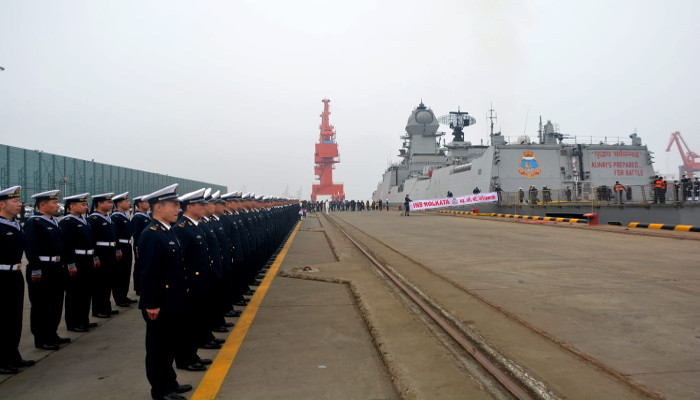
India's frontline stealth destroyer INS Kolkata being welcomed by PLA Navy (PLAN) personnel at Qingdao, China ahead of the International Fleet Review to mark 70th anniversary of PLAN. Photo: Indian Navy
By Ritu Mousumi Tripathy
The just-concluded naval fleet review of China wherein the Asian giant put into display its massively growing maritime might having ambitious “blue water” capabilities has sent a clear message to the world – Beijing has moved ahead fast in its aspiration to be the power at sea sooner than later.
The People’s Liberation Army Navy (PLAN), which marked its 70th anniversary with the fleet review, has emerged as the fastest growing naval power in the world, adding newer platforms of varied size and strength to its fleet almost every month.
While such an unprecedented growth of the PLAN appears to have tilted the balance of power at sea in the Asia Pacific region, it has triggered an alarming naval arms race with several countries in the region, big and small, now eyeing to acquire modern maritime assets to safeguard their economically and strategically important sea zones.
At a time when maritime disputes in the South China Sea and East China Sea have propelled many Southeast Asian nations to bolster their naval prowess, China’s increasing presence in the Indian Ocean Region, pegged as India’s “strategic backyard”, has also driven New Delhi to maintain the power equilibrium in this highly critical maritime zone.
While acknowledging the rapidly rising naval might of China which, having “global power” ambitions, has built up a most diverse maritime force in the entire Asian continent in 21st century, India, however, has not shied away from pursuing its own “blue water” goals by keeping up the momentum to strengthen its overall naval fleet in order to protect the maritime regions vital for its own strategic autonomy, trade & economy and freedom of navigation.
With a sizable naval fleet consisting of aircraft carrier, submarines, destroyers, frigates in addition to other important modern maritime assets, India has endeavoured to maintain the maritime checks and balances in the Indian Ocean Region in particular.
In recent years, Indian Navy has also voyaged into the waters of faraway countries and distant lands, thereby harnessing its long-distance operational deployability and maritime dexterity. It has also regularly been involved in bilateral, trilateral and multi-lateral naval drills with several countries, including the MALABAR wargames and the RIMPAC multi-national exercise.
As part its “Mission-based Deployments”, the Navy has also actively deployed its warships and aircraft to the Persian Gulf and Gulf of Aden besides the South and Central Indian Ocean Region (IOR) and in the Malacca Strait.
The participation of two Indian Navy ships in the Chinese Navy fleet review in Qingdao last month assumes significance in this context.
By sending one of its most powerful frontline warships – stealth destroyer INS Kolkata – the largest indigenously-built stealth destroyer of India which flaunts a state-of-the-art weapons suite, including the formidable BRAHMOS supersonic cruise missile system, along with fleet tanker, INS Shakti – to the PLAN fleet review, India has yet again clearly stated its intent of maintaining bonhomie and peaceful co-existence and co-operation with other navies in its neighbourhood, including with the PLAN, for regional stability and prosperity even while securing its own maritime, strategic, economic and diplomatic interests in the near and far off ocean regions.
In February 2016, India had conducted an International Fleet Review off its Visakhapatnam coast in the Bay of Bengal in which some 100 warships and Navy personnel from over 50 countries, including China, had taken part. That grand event had reinforced India's strong commitment to regional peace and stability while conveying New Delhi's willingness to play a larger role in engaging with other naval powers in the region and beyond to secure and protect its own maritime interests even while facilitating those of the others in a peaceful, cooperative manner.
The Chinese fleet review witnessed the participation of a total of 18 warships sent by 13 countries while over 60 countries sent their naval delegations for the event.
India sent its ships to China for the first time after the acrimonious military stand off between New Delhi and Beijing over the disputed Doklam region in 2017.
Incidentally, the two Indian Navy platforms sailed through the Taiwan Strait – the narrow strip of waters of the Pacific that separates China and Taiwan – to reach Qingdao for the PLAN fleet review. The Taiwan Strait has remained a highly contentious region with China taking offense to any foreign vessel entering the strategic passageway, terming it as an “infringement” of its territorial waters.
Just ahead of the Qingdao naval parade, Beijing withdrew its invitation to the French Navy to take part in the event after a French warship reportedly sailed through the Taiwan Strait earlier in April, which China termed “illegal”.
However, the Indian naval ships' passage through the same “strategic waterway” appears to signal a thaw in military-to-military relations between New Delhi and Beijing post-Doklam.
 Previous Article
Previous Article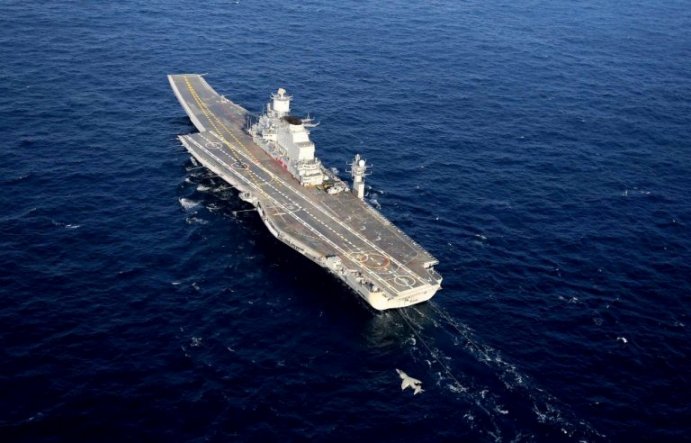 Next Article
Next Article

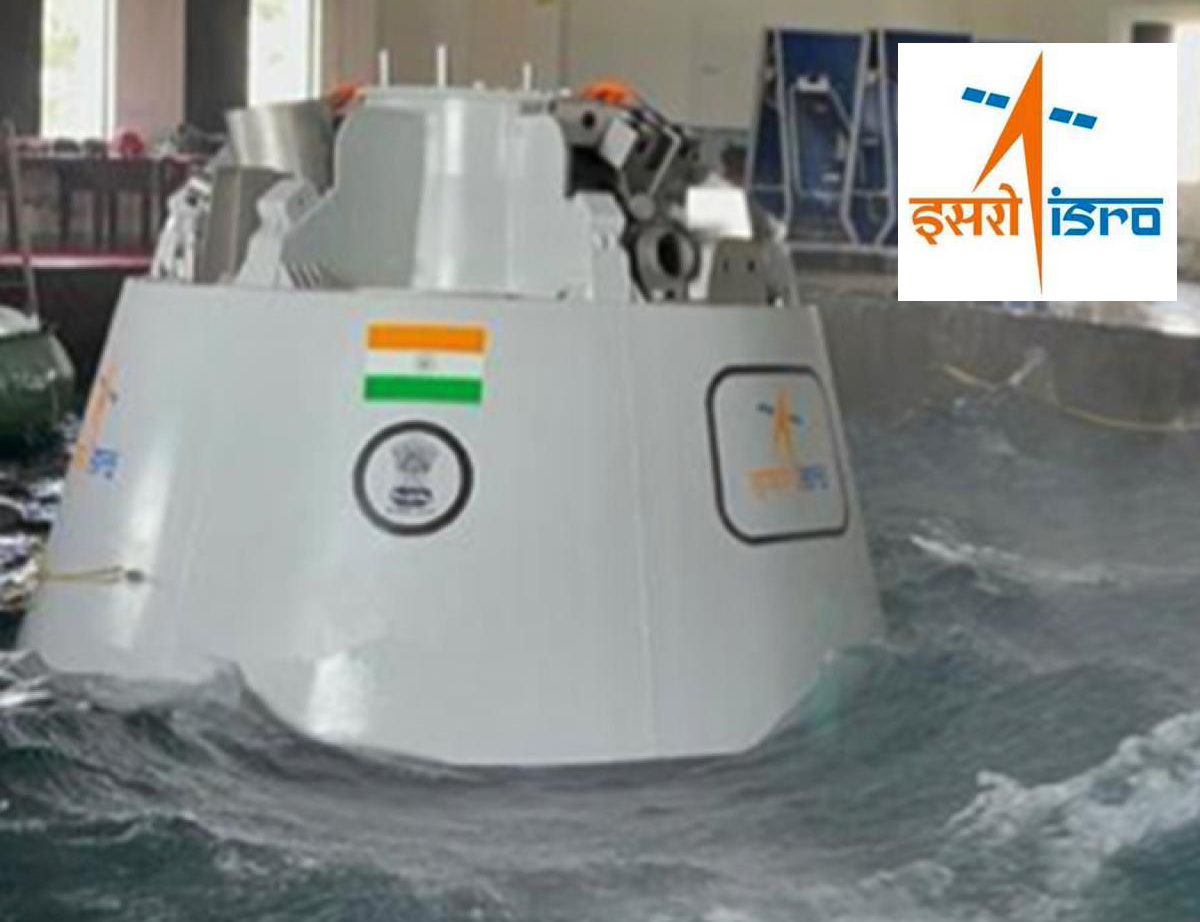
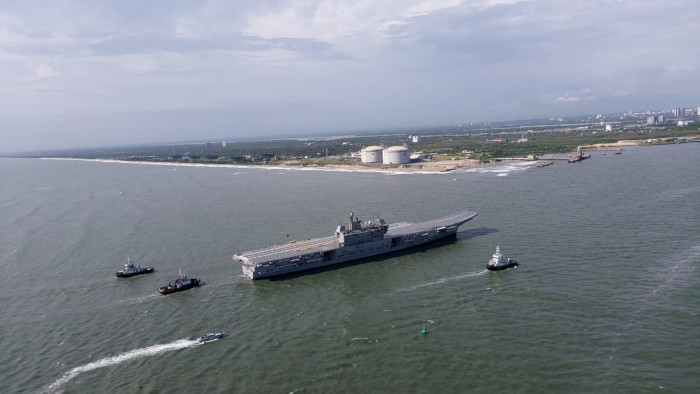


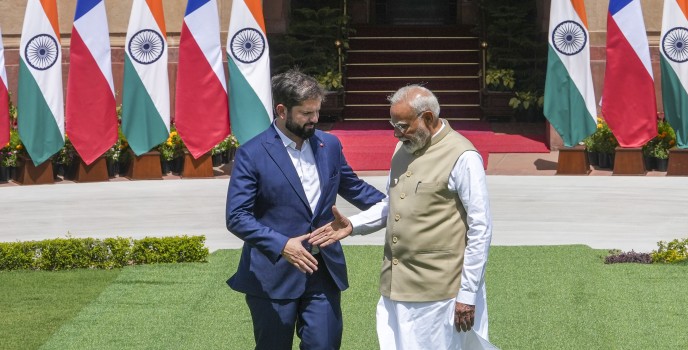
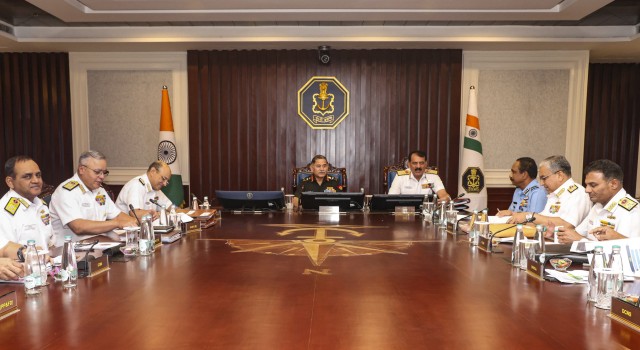





The Indian Air Force, in its flight trials evaluation report submitted before the Defence Ministry l..
view articleAn insight into the Medium Multi-Role Combat Aircraft competition...
view articleSky enthusiasts can now spot the International Space Station (ISS) commanded by Indian-American astr..
view article